This is a very quick (and incomplete) overview of some of our research. Click on a topic to expand.
Turbulence and Combustion ScienceThere are numerous, largely apocryphal, quotes expounding how “turbulence” is the last great unsolved problem in classical physics. While it is not entirely clear what is meant by “solving” turbulence, we do know that when you combine turbulence with chemistry, everything gets more complicated (harder to “solve”). For example, the chaotic turbulent fluid advection creates enhanced scalar gradients that increase molecular mixing rates between species and energy, which in turn affect chemical reaction rates. In turn, exothermic and endothermic reactions couple the conversion between internal and thermal energy to changes in fluid kinetic energy… the turbulence changes the flame and the flame changes the turbulence in very complicated ways.
In this research area, we are using advanced diagnostics to probe the microscopic interactions between turbulence and chemistry in order to unravel these processes. The overarching objective is to determine physically-sound paradigms with which turbulence/chemistry interactions can be modeled in simulations, thus enabling robust, predictive, and affordable numerical solutions of turbulent reacting flows. Topics of recent interest include how flames interact with pressure fields to create small scale vorticity (or enstrophy) and how turbulence kinetic energy is transported among different scales of motion.
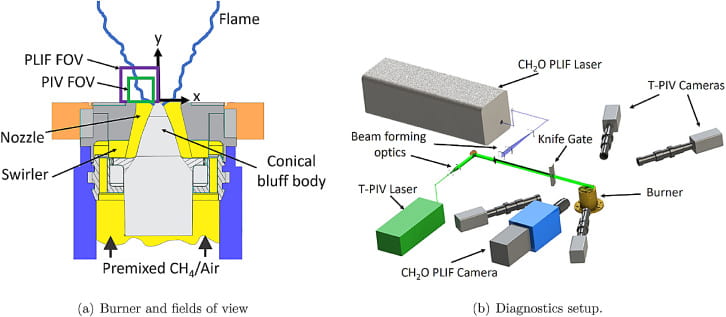
Some recent papers:
- Physical space analysis of cross-scale turbulent kinetic energy transfer in premixed swirl flames (2021)
- Structure and dynamics of highly turbulent premixed combustion (2021)
- Flame-and flow-conditioned vorticity transport in premixed swirl combustion (2021)
- Reaction zone stratification in piloted highly-turbulent fuel-lean premixed jets (2019)
Combustion Dynamics
Combustion dynamics refers to a variety of unwanted processes that can occur in engines and cause major problems. The four main areas of interest are thermoacoustic instabilities, combustor noise, blowout, and flashback.
Thermoacoustic instabilities are self-excited oscillations of coupled pressure and heat release rate fields that occur in combustors. These instabilities have the potential to cause massive damage, particularly in high-pressure systems (e.g. gas turbines, rockets, etc.). Unfortunately, the mechanisms by which pressure and heat release rate can couple in such practical high-pressure systems are very complex and difficult to predict/prevent… and things get worse as you try to simultaneously make the combustion cleaner. In a variety of projects, we are using laser diagnostics and techniques from nonlinear dynamics to explore the various ways thermoacoustic instabilities are driven in current and potential future engines. A recent emphasis is on novel combustors for low-emission supersonic civil transport.
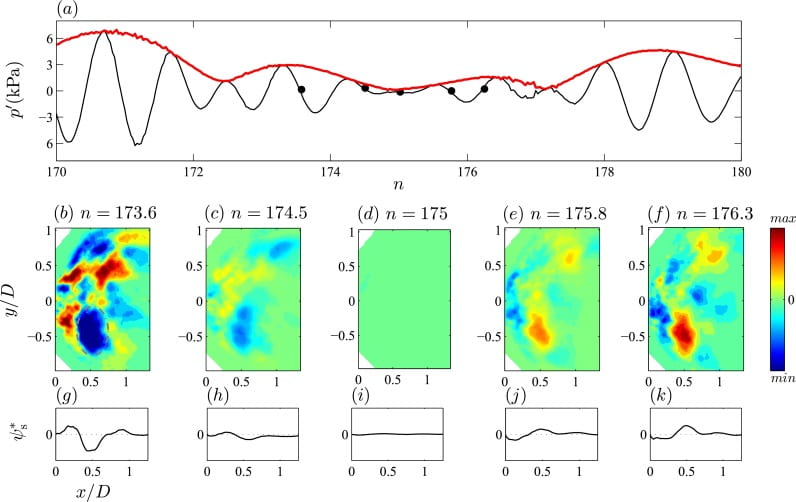
Noise is the most common complaint made to the FAA and combustors are a major source of engine noise. Combustion noise can arise directly from turbulent (broadband) or coherent (tonal) fluctuations in the flame, or indirectly as entropy fluctuations are accelerated through the turbine nozzle. As part of an ongoing partnership within the Ben Zinn Combustion Lab, we are using laser diagnostics to measure both the direct and indirect noise sources in combustor configurations relevant to future advanced engines.
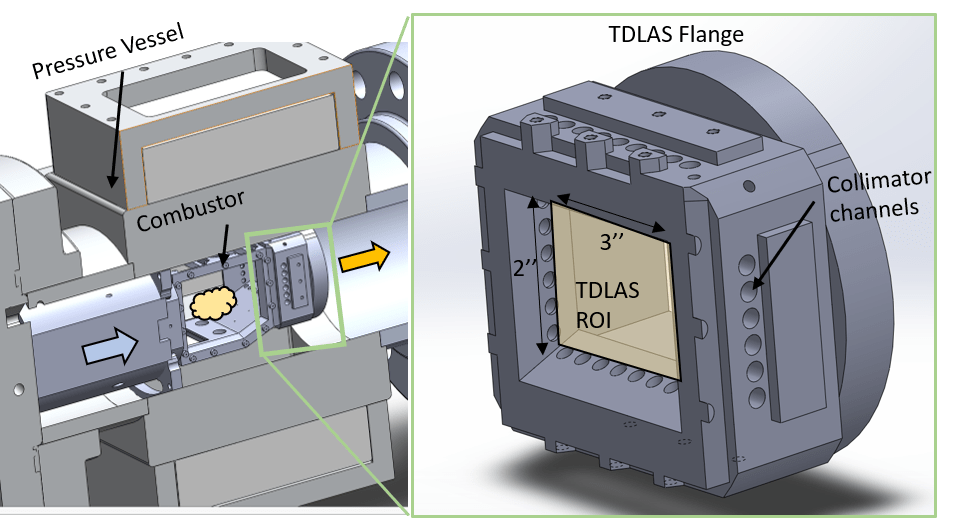
Combustor blowout refers to the flame completely extinguishing in the combustor due to (something resembling) too much air. Generally, reducing pollutant emissions pushes us to operate combustors with lower fuel/air ratios. However, this can only be done to some limit and that limit is set by a complicated interplay between fluid mechanics, transport, and chemistry. Moreover, the relevant interplay is dependent on the configuration; some systems may blowout due to the excitation of global hydrodynamic modes, others may blowout due to poor recirculation of burnt products. In various research programs, we are looking at what sets the blowout limits of realistic combustors (e.g. involving multiple interacting nozzles) and using alternative fuels (e.g. ethanol, syngas, biogas, etc.).
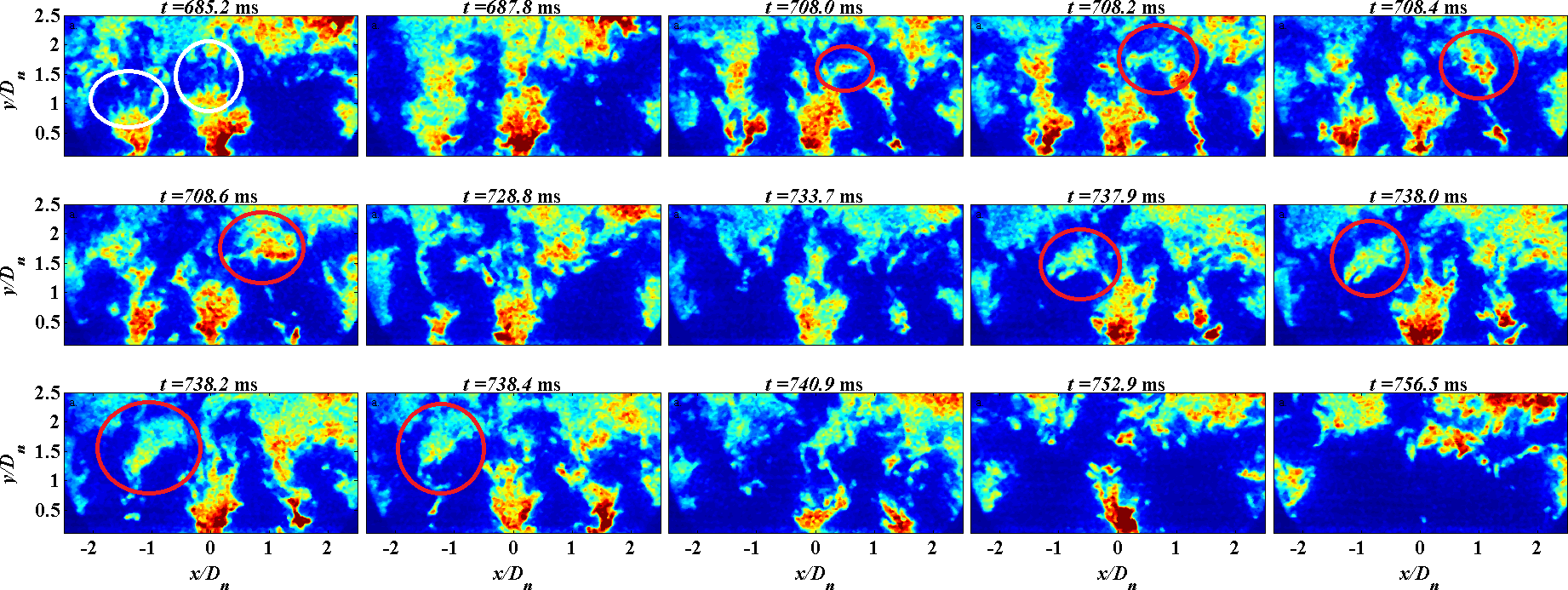
Flashback is, in some ways, on the opposite end of the spectrum from blowout. In this case, the reactions occur so fast that they move upstream against the flow of reactants and enter hardware that is not meant to hold flames… this hardware then melts (or the engine has to shut down). We have been looking into this process to find robust dynamic precursors to flashback that can potentially be used to affect control.
Some recent papers:
- Cross-frequency coupling during thermoacoustic oscillations in a pressurized aeronautical gas turbine model combustor (2021)
- Statistics and dynamics of intermittent boundary layer flashback in swirl flames (2020)
- Effect of internozzle spacing on lean blow-off of a linear multinozzle combustor (2020)
- Dynamics and mechanisms of pressure, heat release rate, and fuel spray coupling during intermittent thermoacoustic oscillations in a model aeronautical combustor at elevated (2017)
High Speed Flows and Flames
A variety of aerospace systems are aiming to fly faster than normal. On the civil side, there is increasing interest in supersonic transport systems (Mach 1-2) that can connect the world in record time. However, to do so, in an environmentally compatible manner requires reimagining how we burn fuel in jet engines, the overall engine configuration, and the impact of emissions on the environment. We have partnered with GE and the FAA to work on novel low-emission combustor technologies for future generations of civil supersonic transport engines.
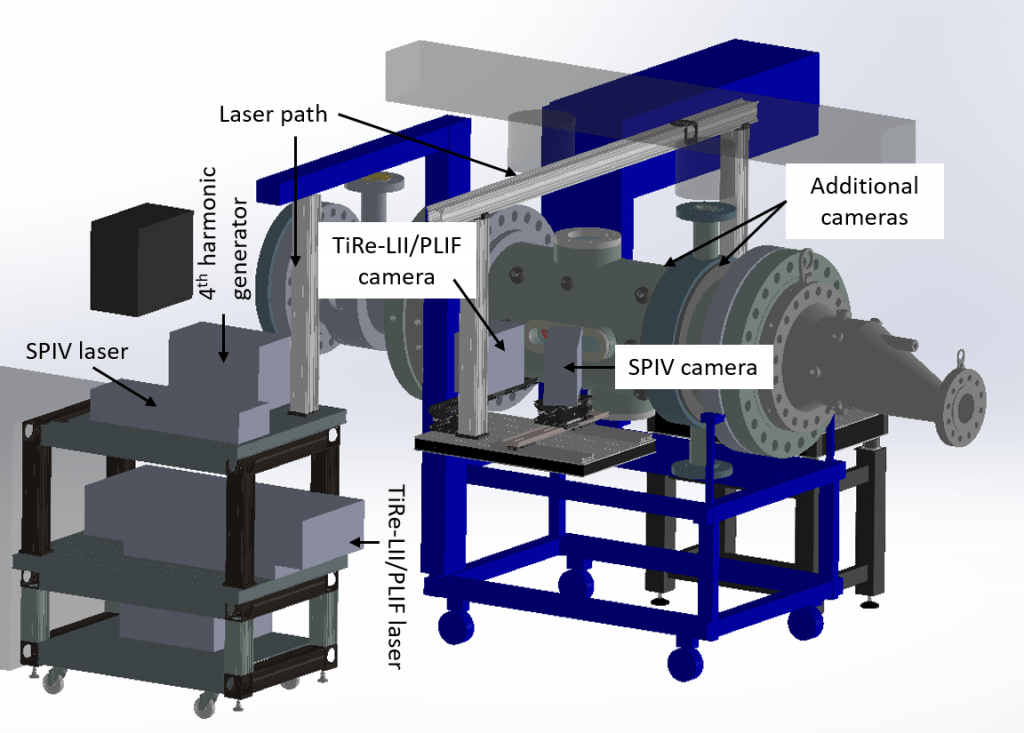
On the defense side, speeds are pushing into the hypersonic realm (Mach numbers greater than 5), bringing a whole host of challenges in terms of physical understanding and diagnostic sensing. We currently are working on a new project to understand the behavior of large-scale fluid structures in supersonic flames, which increase mixing and reaction rates. Recently, we completed a project to optimize sensor systems for measuring mass capture in hypersonic inlets.
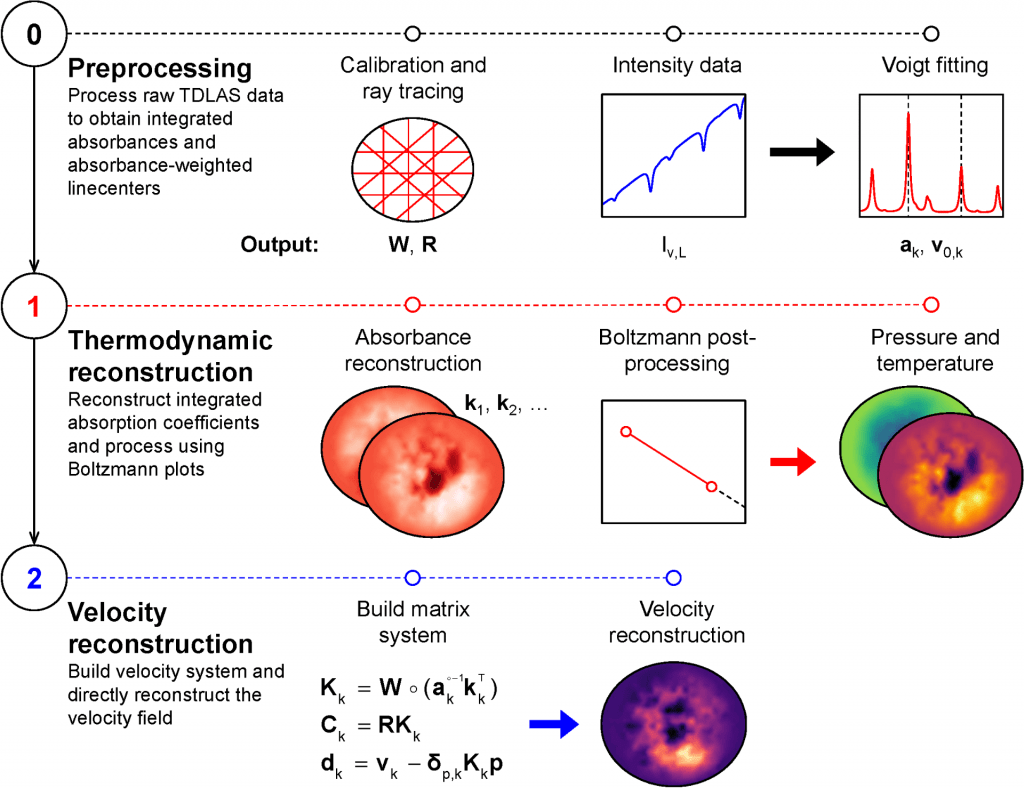
Some recent papers:
Laser (and Optical) Measurement Techniques
As you may have gathered from the above sections, we use lasers to measure a lot of things; indeed, we also use light that does not come from lasers. Moreover, to measure what we want, we innovate both on the measurement technique and how we use the data. Can you measure how turbulence transports chemical species in a high-pressure flame? Can you measure properties of plasma inside Hall thrusters? Can you measure really fast gas speeds based on light absorption? Can you quantify nanometer scale particulates inside of gas turbine combustors (to figure out how to get rid of them)? These are just a few of the challenges we are addressing.
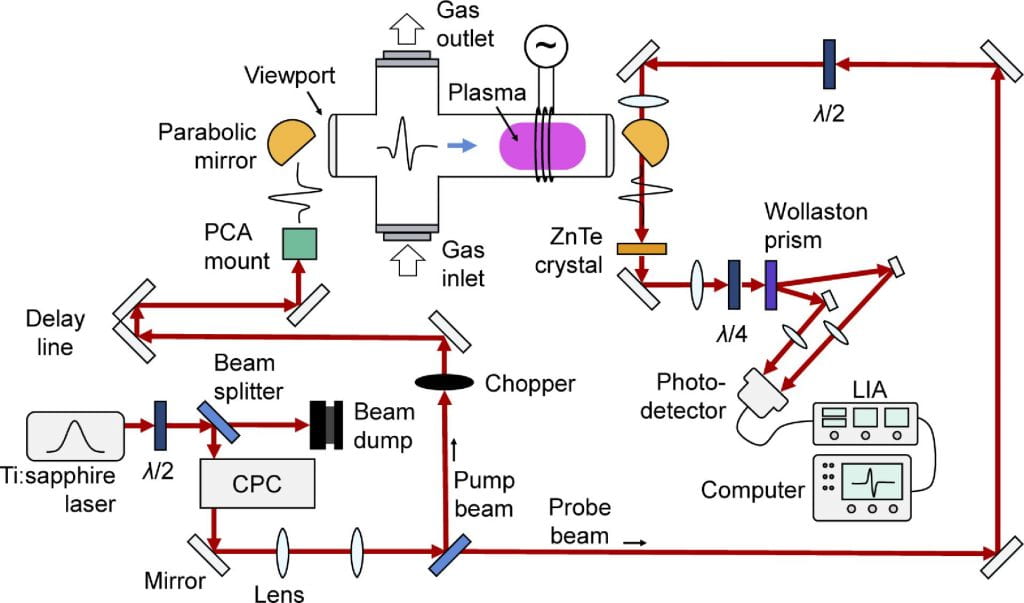
Some recent publications:
Novel Combustors
While there still is a TON of work to do improving the types of combustors used in current engines, we also are thinking about what the moderate and distant future of chemical energy may look like (and working to make it better). For example, what happens if you want to burn fuels at REALLY high pressures, like 300 times atmospheric pressure? These conditions are “supercritical” for the fluids of interest and there are no longer distinguishable liquid and gas phases… think of water vapor with a density similar to liquid water! How can you even measure anything at these conditions? Well, we are working to figure that out! (There are lasers involved:-).
What about trying to break the Brayton cycle? Most aerospace engine operate on something like a Brayton cycle, wherein the combustion occurs at (nominally) constant pressure. However, there are more efficient ways of operating an engine if you can do it with continuous flow in a safe and robust manner. There recently has been a renewed interest in “detonation” based engines, in which combustion occurs across a supersonic detonation wave.


You must be logged in to post a comment.